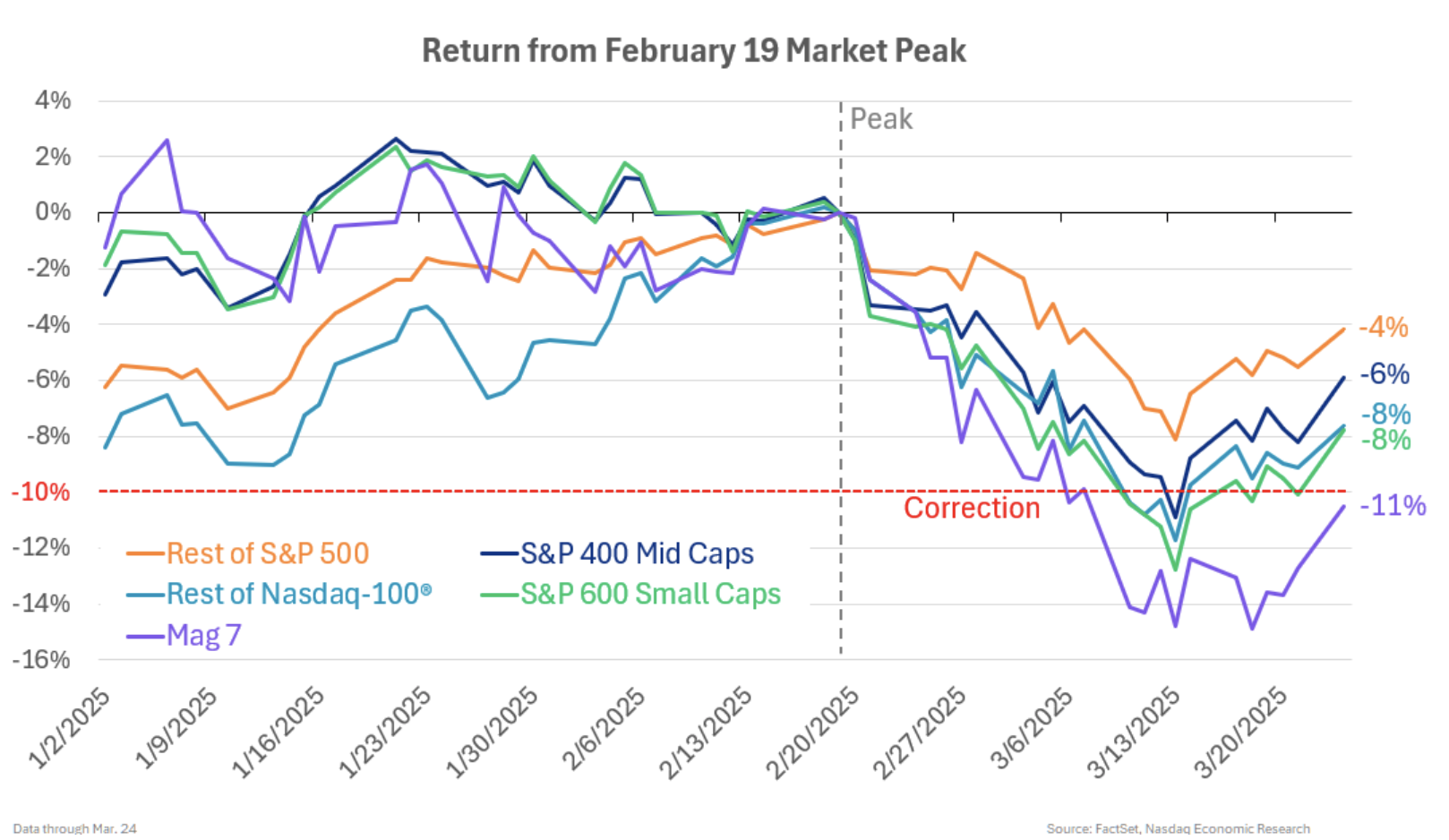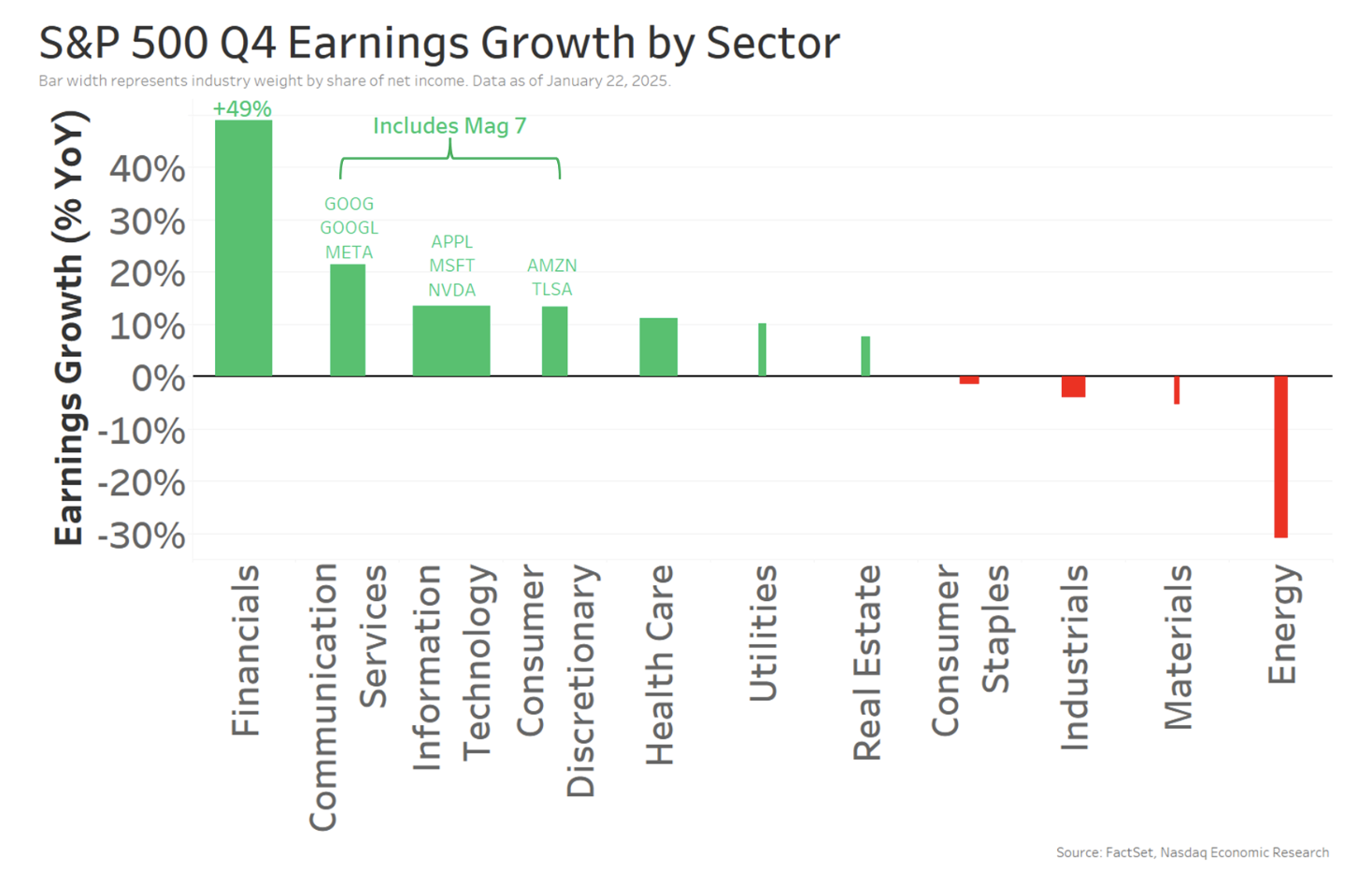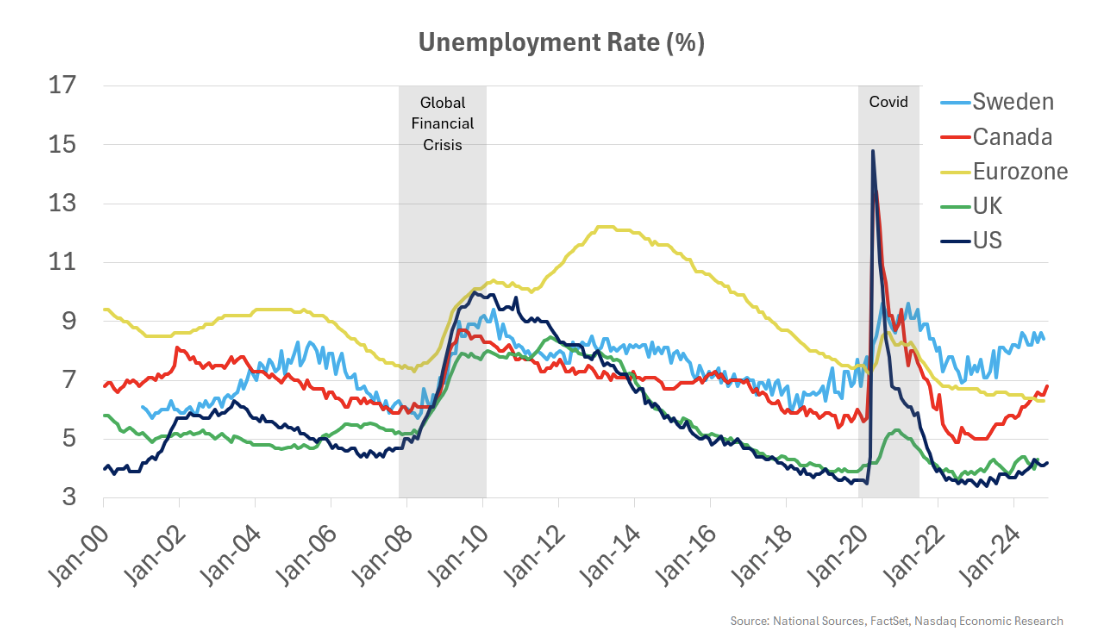Economy
Market Correction Driven by Declining Valuations Rather Than Earnings
Market Selloff Drives Mag 7 Down Amidst Earnings Resilience Mag 7 Led Selloff in Q1 as All Caps Indexes Enter Correction Last week, we ...
Nasdaq Q4 Earnings Forecast: What to Expect
Financial Sector Leads Q4 Earnings Surge for S&P 500 Strong Start for Q4 Earnings Season The Q4 earnings season began last week, highlighted by ...
“Navigating the 2024 Goldilocks Economy: Opportunities and Insights”
2024: A Year of Economic Recovery and Steady Growth As we approach the end of 2024, economies—especially in the US—are displaying a strong recovery. ...
“Q3 Earnings Fueled by the Magnificent Seven”
The Mag 7 Dominates Q3 Earnings Once Again The unofficial close of Q3 earnings season featured the last report from a Mag 7 company, ...
Hiring Plans Diverging for Big & Small Companies
Layoffs lower than their entire pre-Covid history We got data showing that initial claims for unemployment insurance dipped, and they’ve been hovering in the same ...
Covid Distortions Still Impacting Inflation
Inflation has risen from 3.1% YoY to 3.5% this year It’s been a tough start to the year for inflation. Headline CPI inflation was ...
‘Fab Five’ Makes Q1 Earnings Top Heavy
Large cap earnings growth stays positive in Q1 We’re in the thick of Q1 earnings season, with 45% of S&P 500 firms having reported. ...
Striking Disparity in Earnings Performance: Big vs Small Caps
A Glimpse Into Earnings Season Trends As the curtain nears on Q4 earnings season, a tale of two sectors unfolds. With 95% of S&P ...
Market Reacts to CPI Data | Nasdaq
Investor Panic Grips Market as CPI Data Drives Selloff
Market Meltdown Wednesday’s CPI report triggered a market selloff, particularly hitting small caps. Both the Nasdaq-100 ETF and Nasdaq Mid-Caps ETF fell nearly 2% ...
Recent Bond Yield Surge and Its Implications
Recent Bond Yield Surge and Its Implications
Surge in Treasury Yields If the latest rumblings in bond markets have not caught your attention, it might come as a shock that the ...











